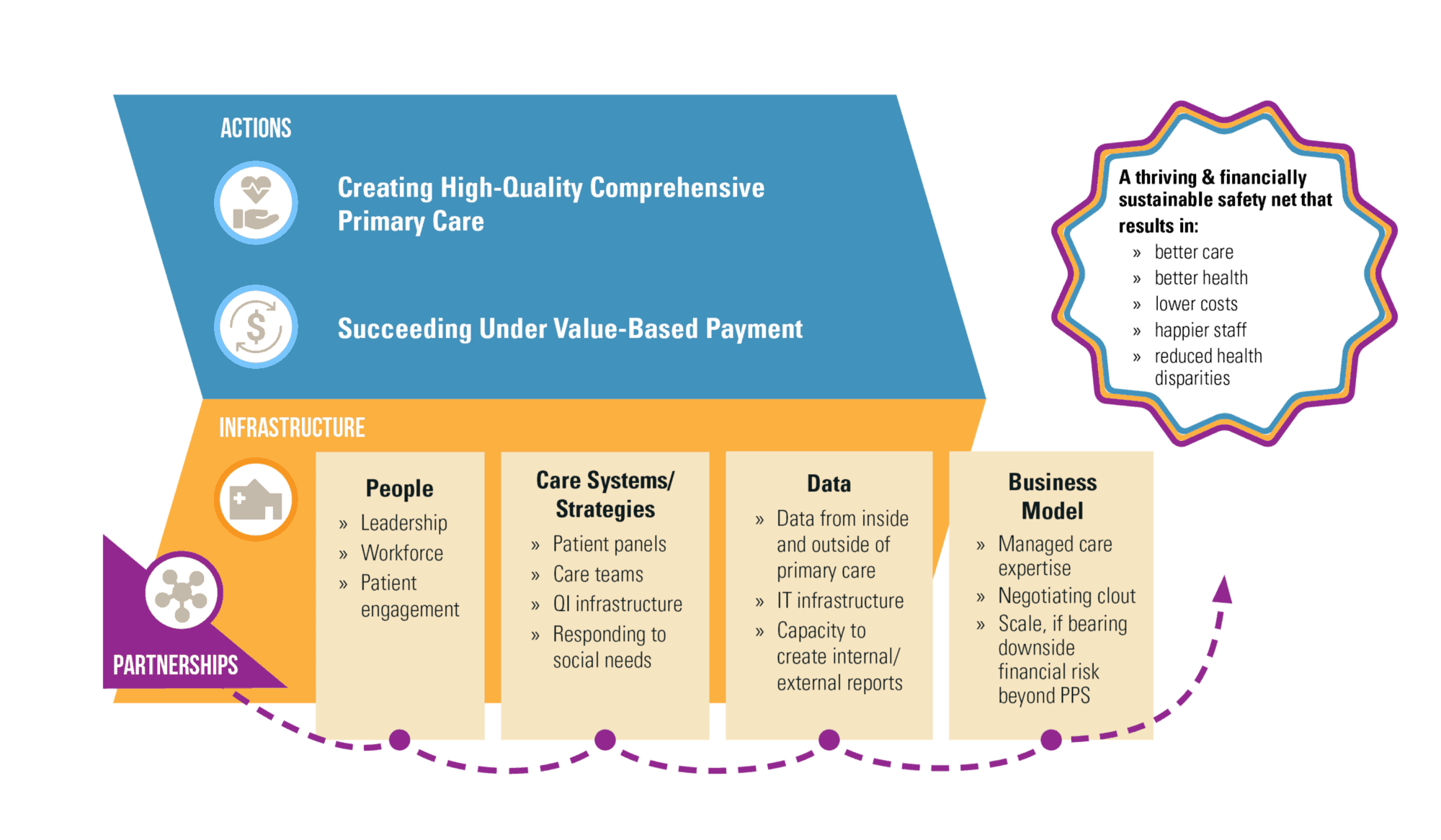A Path to Financial and Clinical Success for Community Health Centers
March 24th, 2018 | viewpoint
At JSI, we have long worked with health centers and appreciate their role as a critical backbone of primary care for over 26 million Americans and over 4 million Californians. In recent years, we have supported health centers, primary care associations, and their partners in exploring alternative payment models. Through this journey, we have witnessed, and at times lent a voice to, a changing conversation about the role and value of health centers, as well as the need for new payment systems.
Despite our experience with changes in payment and care being deeply intertwined, when the California Health Care Foundation (CHCF) approached us to write one paper on both, our first response was, “Is this two papers — one focused on payment and one on care?” Even as our research team dove into the literature, most papers focused on either change in payment or care models but few wove the two together. We hope our paper will contribute to the field precisely because it brings together the notions of payment and care. Indeed, our interviews repeatedly confirmed that health center leaders are thinking concurrently about both. A Model for Advancing High Performance
A Model for Advancing High Performance
As we listened carefully to the experiences of high-achieving practices and their partners and the insights of expert advisors, it was heartening to recognize that common “pillars” of infrastructure — including People, Care Systems and Strategies, Data, and Business Model — underpin both successful participation in value-based payment and creation of high-quality, comprehensive primary care. Additionally, we consistently heard about a broad range of partnerships — consortia, health center-led independent practice associations (IPAs), health plans, hospitals, social service organizations, and even other health centers — that were supporting health centers in gaining access to or developing this necessary infrastructure. If there is only one takeaway from this research, it is that pursuing partnerships will increasingly represent a path toward financial and clinical success for health centers in the future.
We are grateful to CHCF for the vision to pursue this project, to our co-authors at MacColl for their partnership and intellectual fortitude, and to all key informants and expert advisors who helped shape this paper. We hope that the Model for Advancing High Performance (MAHP), the Roadmap for Partnering, and the takeaways from four unique case studies will stimulate conversations and actions among health center leaders, as well as organizations, consortia, payers and foundations that are interested in supporting a thriving safety net going forward.
Partnering to Succeed: How Small Health Centers Can Improve Care and Thrive Under Value-Based Payment – A paper focused on partnerships and infrastructure that can help health centers — and smaller ones, in particular — best participate in new payment models and improve care for the patients they serve.*
At JSI, we have a vision of a safety net that thrives financially and achieves outcomes across a broad range of measures. Together with our colleagues at MacColl and the Center for Care Innovations, we are already finding the MAHP framework helpful as we begin a new national project: the Delta Center for a Thriving Safety Net. Sponsored by the Robert Wood Johnson Foundation, and in collaboration with the National Association of Community Health Centers and the National Council for Behavioral Health, the Delta Center is focused on building capacity in value-based payment and care among primary care associations, behavioral health state associations, and the safety-net providers whom they represent. We look forward to using this CHCF-sponsored work to further a national effort to promote a vibrant and thriving safety net.
*We are grateful to the MacColl Center for Health Care Innovation at Kaiser Permanente Research Institute Washington and the California Health Care Foundation for collaborating with us to develop the report.
Written by Rachel Toby
We strive to build lasting relationships to produce better health outcomes for all.